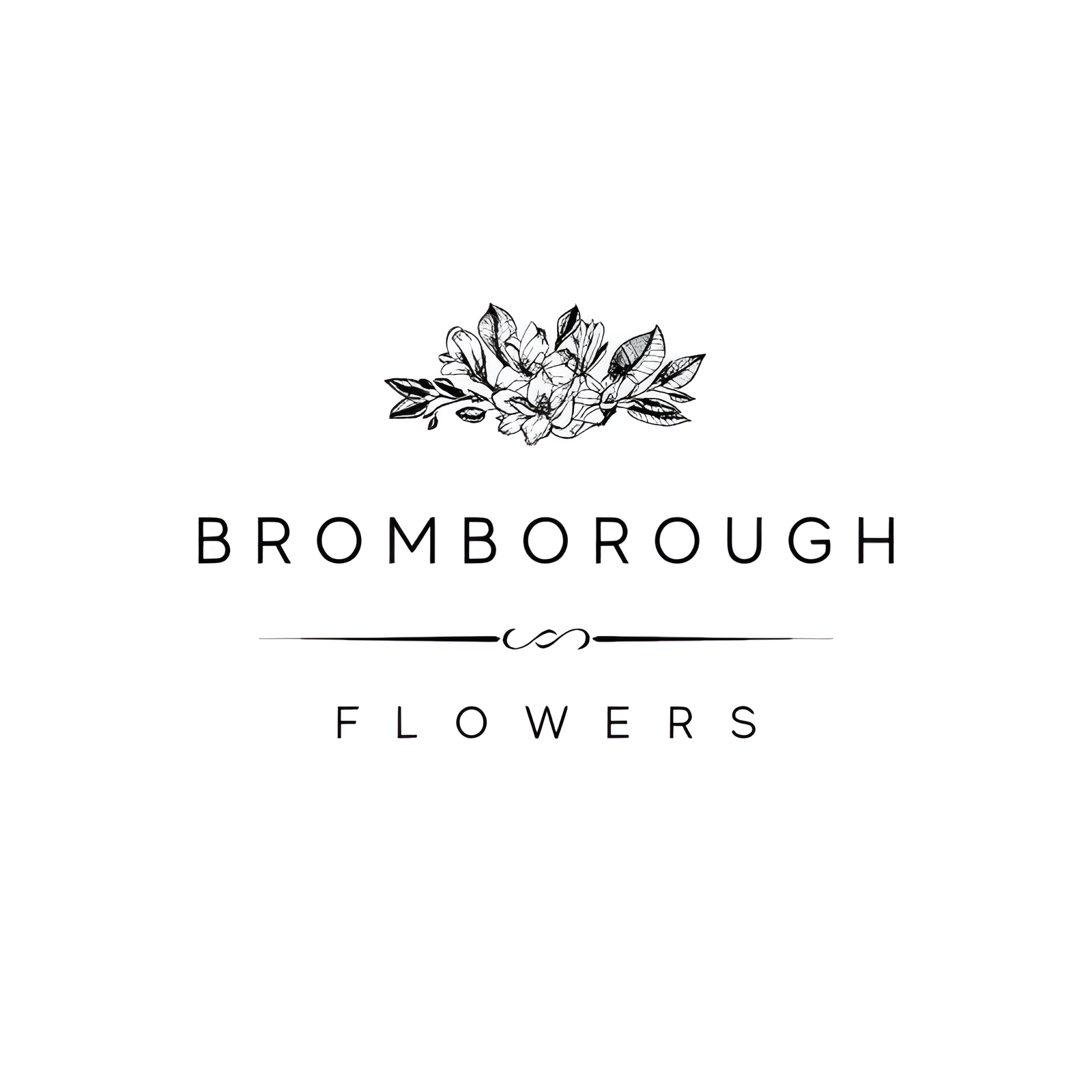In the world of wedding flowers, lilacs stand out for their enchanting beauty and rich symbolism. These blooms, available in a spectrum from light purple to deep violet, not only enhance visual appeal but also imbue floral arrangements with a sense of love, confidence, and youthful innocence. Their sweet fragrance and lush clusters make them a favored choice for bouquets, centerpieces, and ceremony decorations, particularly in spring and early summer. To fully appreciate how lilacs can transform your wedding ambiance and explore their cultural significance, continue exploring their multifaceted roles in wedding celebrations.
Flower Overview
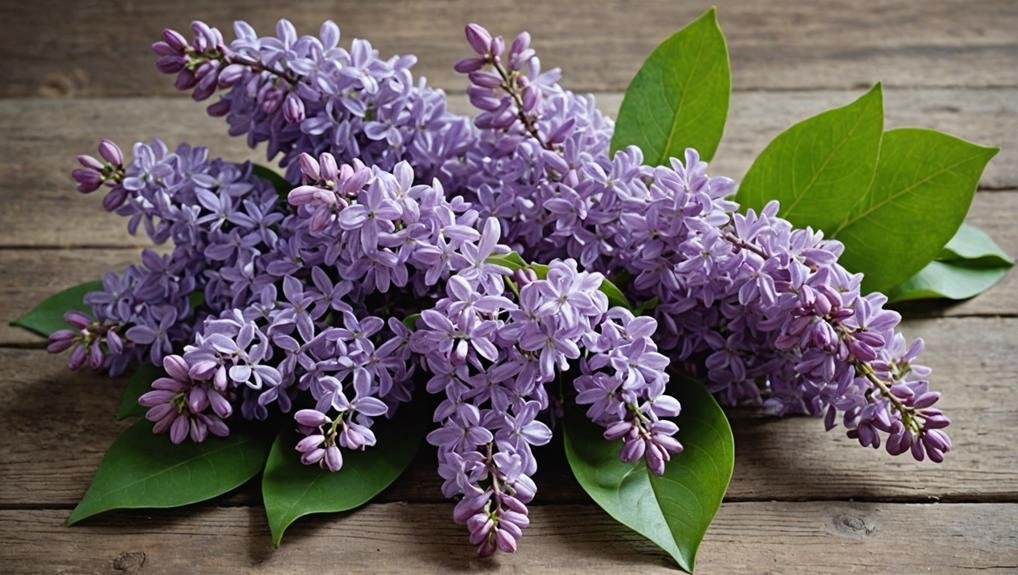
Why are lilacs such cherished flowers for weddings and romantic occasions?
Lilacs are celebrated for their delicate, fragrant blooms and their array of colors, ranging from light purple to deep violet. This spectrum of hues not only adds a touch of elegance to any wedding but also imbues the event with symbolic meanings of love, confidence, and youthful innocence. The lilac's versatility makes it a favorite in floral arrangements, often paired with other flowers such as roses and peonies to create a visually appealing and aromatic display.
Lilacs are typically in season during the spring and early summer months, which coincides perfectly with the popular wedding season. Their short vase life can pose a challenge, making them ideal for DIY brides who wish to incorporate fresh, ephemeral beauty into their wedding decor. For those looking for a more durable option, high-quality silk lilacs serve as an excellent alternative, maintaining the aesthetic appeal without the fragility of fresh blooms.
Incorporating lilacs into a wedding palette that includes shades like Peach can create a harmonious and romantic atmosphere. Their subtle yet impactful presence in floral arrangements can elevate the overall ambiance of any wedding celebration.
Physical Description
What makes lilacs particularly captivating in their physical appearance is their vibrant, clustered blossoms that come in an array of enchanting colors such as purple, pink, white, and blue. These blossoms, typically small and densely packed, are arranged on long stems, creating a lush and full appearance that is visually stunning. The strong, sweet fragrance of lilacs adds to their appeal, capable of filling a space with their delightful scent, making them a favorite for wedding bouquets and other special occasions.
The blossoms of the lilac are not only visually appealing but also bring a delicate charm to any arrangement. However, the fresh and delicate nature of lilacs requires meticulous handling to maintain their beauty throughout an event. Their propensity to wilt quickly means they need to be kept well-hydrated and cool, especially when used in wedding bouquets and centerpieces.
Below is a table summarizing key aspects of lilacs:
| Characteristic | Description | Importance for Weddings |
|---|---|---|
| Blossoms | Small, clustered on long stems | Creates lush, full appearance |
| Fragrance | Strong, sweet scent | Fills space with delightful aroma |
| Colors | Purple, pink, white, blue | Versatile for various themes |
| Delicacy | Requires meticulous handling | Ensures fresh, beautiful look |
Lilacs, with their fragrant and vibrant blossoms, are a timeless choice for adding a romantic and whimsical touch to wedding celebrations.
Available Colour Varieties
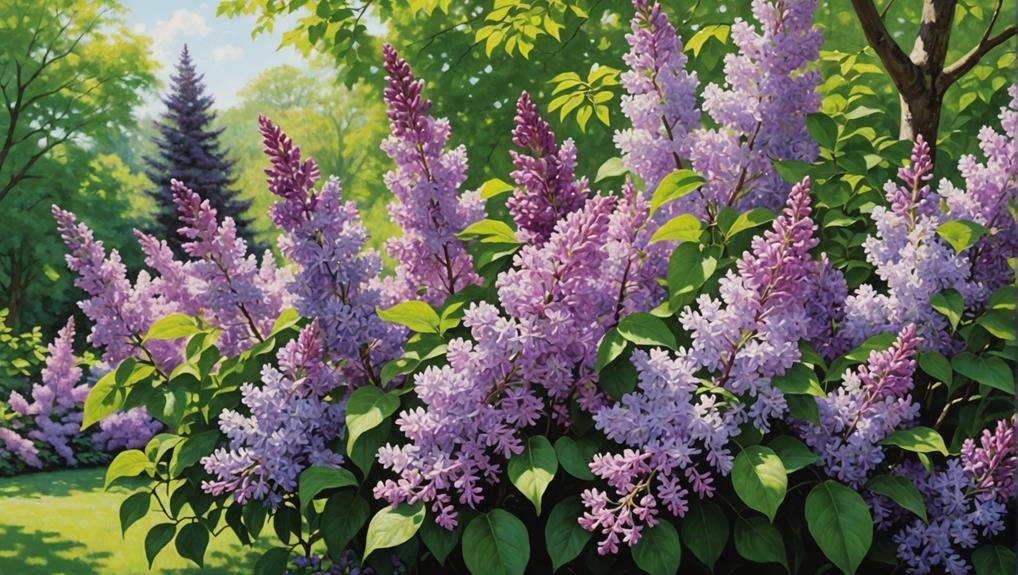
Building upon their delicate allure and enchanting aroma, lilacs are available in a wide array of color varieties that enhance their versatility for wedding decor. These blooms come in numerous shades, mainly featuring hues of purple, pink, and white.
The spectrum of purple lilacs ranges from light lavender to deep violet, providing abundant options for creating a romantic and cohesive aesthetic. Pink lilacs are equally captivating, offering a softer, more pastel palette that can evoke a sense of romance and tenderness. These pink varieties can range from pale blush to more intense rose shades, allowing for a nuanced and personalized touch to wedding arrangements.
White lilacs, meanwhile, bring an element of purity and elegance, serving as a timeless choice that complements virtually any color scheme. The intensity of lilac shades can vary significantly, with some blooms presenting a more vibrant appearance while others offer subtle and understated hues.
This variation allows for customization that can align with specific wedding themes, whether aiming for a bold and dramatic setting or a delicate, pastel-infused ambiance. By thoughtfully selecting from the available color varieties, lilacs can seamlessly integrate into and elevate the overall wedding decor.
Latin Name and Taxonomy
The lilac, scientifically known as Syringa vulgaris, belongs to the Oleaceae family. This deciduous shrub is renowned for its beautiful and aromatic flower clusters, which have made it a popular choice for wedding arrangements and garden settings alike. Syringa vulgaris can reach up to 20 feet in height and features heart-shaped leaves and woody stems, contributing to its sturdy yet elegant appearance.
Lilacs are categorized within the Oleaceae family, which also includes other well-known plants such as olives and jasmine. The taxonomy of lilacs is quite diverse, encompassing numerous cultivars that offer a wide range of flower colors. While the classic lilac hue is a vibrant purple, cultivars have been developed to produce flowers in shades of white, pink, and magenta. This variety in flower colors allows for greater flexibility in floral design, making lilacs a versatile choice for wedding décor.
The specific characteristics of Syringa vulgaris, including its deciduous nature and fragrant blooms, make it a plant of significant horticultural interest. Understanding the Latin name and taxonomy of lilacs provides a foundational knowledge that enhances the appreciation and effective use of these beautiful shrubs in various settings.
Geographical Origins
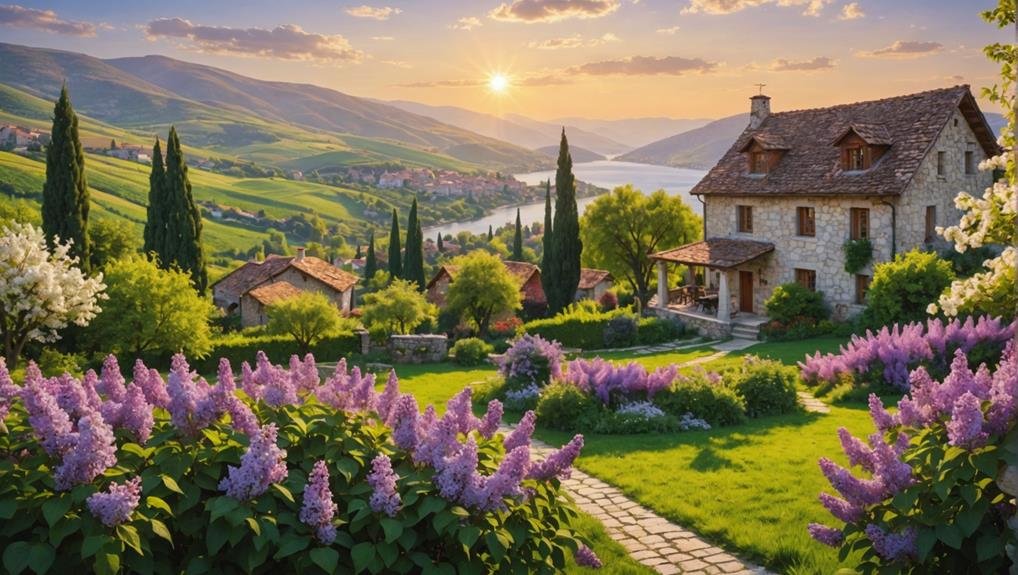
Native to southeastern Europe, lilacs have a storied history that spans centuries and continents. These remarkable flowers belong to the genus Syringa and have been cherished for their fragrant, colorful blooms that symbolize love, innocence, and the arrival of spring. Over time, lilacs have transcended their geographical origins, becoming a beloved choice for gardens and floral arrangements worldwide, including lilac weddings.
Lilacs thrive in temperate regions, and their cultivation has expanded notably due to their adaptability and striking beauty. They prefer well-drained soil and can flourish in conditions ranging from full sun to partial shade. This versatility has allowed lilacs to establish a presence in various parts of the globe, making them a popular option for wedding bouquets and decorative floral arrangements.
Imagine the following scenes to appreciate their geographical spread:
- European Gardens: Stately lilac bushes bloom in the serene, historic gardens of Europe.
- American Landscapes: Vibrant lilacs adorn suburban yards and city parks across the United States.
- Asian Adornments: Lilac varieties are carefully cultivated in temperate regions of Asia, adding to the region's floral diversity.
Season Availability
Given their typical bloom period, lilacs are mainly available during the spring and early summer months. This seasonal availability makes them a prime choice for weddings scheduled from late April to early June. Brides and wedding planners can leverage this natural cycle to guarantee that their flower arrangements feature the freshest and most vibrant lilacs.
The availability of fresh lilacs may vary depending on the region and climate. In some areas, the bloom period may start earlier or extend longer, so it is important to consult local florists about the best time to source these flowers. By aligning your wedding dates with the lilac season, you can optimize both the quality and cost-effectiveness of these blooms.
For those who wish to have lilacs in their wedding decor but are planning a ceremony outside of their natural bloom period, high-quality silk reproductions offer a viable alternative. While they may not replicate the exact essence of fresh flowers, they provide a consistent and aesthetically pleasing option year-round.
Considering the seasonality of lilacs when planning wedding dates and flower arrangements can greatly enhance the overall floral experience, ensuring a memorable and visually stunning event.
Growing Conditions
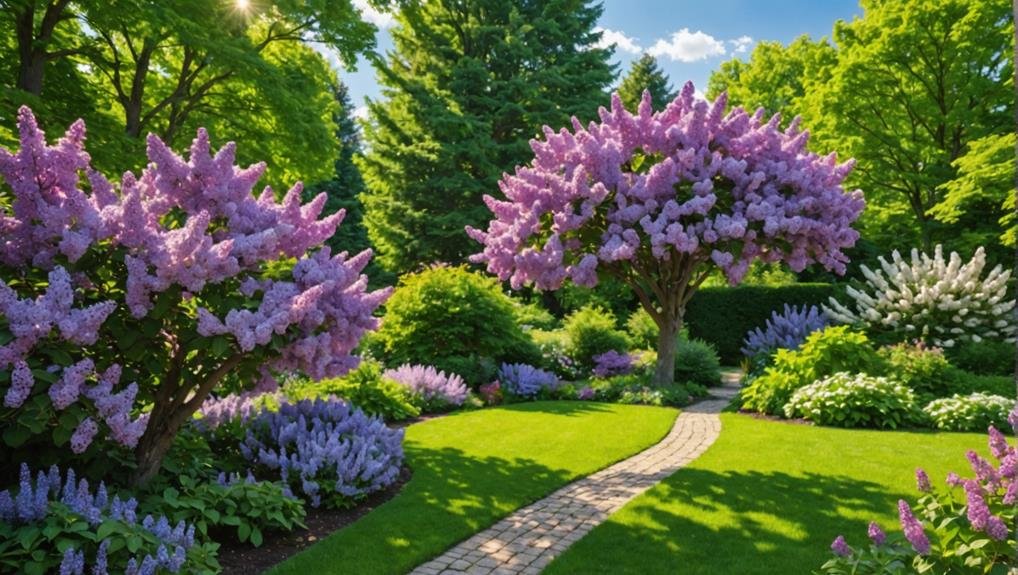
Lilacs thrive in well-drained soil and full sunlight, making these conditions necessary for their best growth. These hardy shrubs are known for their ability to withstand colder climates, making them a resilient option for various regions. To achieve the most vibrant blooms, it is important to ensure that lilacs receive at least six hours of direct sunlight daily.
Maintaining ideal growing conditions for lilacs involves:
- Soil Quality: Lilacs flourish in well-drained soil, which prevents waterlogging and root rot. Amending the soil with organic matter can enhance drainage and nutrient content.
- Sunlight Exposure: Full sunlight is essential for lilacs, as insufficient light can lead to poor flowering and leggy growth. Positioning them in a south-facing location is often recommended.
- Pruning Practices: Regular pruning is vital for promoting healthy growth and abundant blooms. Pruning should be done immediately after flowering to avoid cutting off next year's flower buds.
Propagation of lilacs can be achieved through methods such as cuttings or layering, allowing gardeners to expand their collection or share these beautiful plants with others. By adhering to these growing conditions, lilacs can become a stunning and fragrant addition to any garden or wedding arrangement.
Cultural Significance
The cultural significance of lilacs spans centuries, embodying themes of love, renewal, and the advent of spring across various traditions. In the language of flowers, lilacs are particularly symbolic of love and the fresh beginnings that come with the renewal of nature. They often represent confidence, making them an emblematic choice for those seeking to convey a sense of assurance and stability.
In many cultures, lilacs are closely associated with the celebration of Easter, a time marked by the renewal of life and the blooming of spring. The arrival of lilacs heralds the season's vibrant beauty, symbolizing hope and new opportunities. Their soft, enchanting fragrance and delicate blooms have historically been used to adorn homes and places of worship during this period, further reinforcing their cultural importance.
The symbolism of lilacs extends to their color as well. The light purple hue is often linked to spirituality, creativity, and tranquility, adding a layer of depth to their cultural relevance. This multifaceted symbolism makes lilacs a meaningful inclusion in various ceremonial contexts, where they serve not only as beautiful decorations but also as powerful cultural symbols.
Typical Use in Weddings
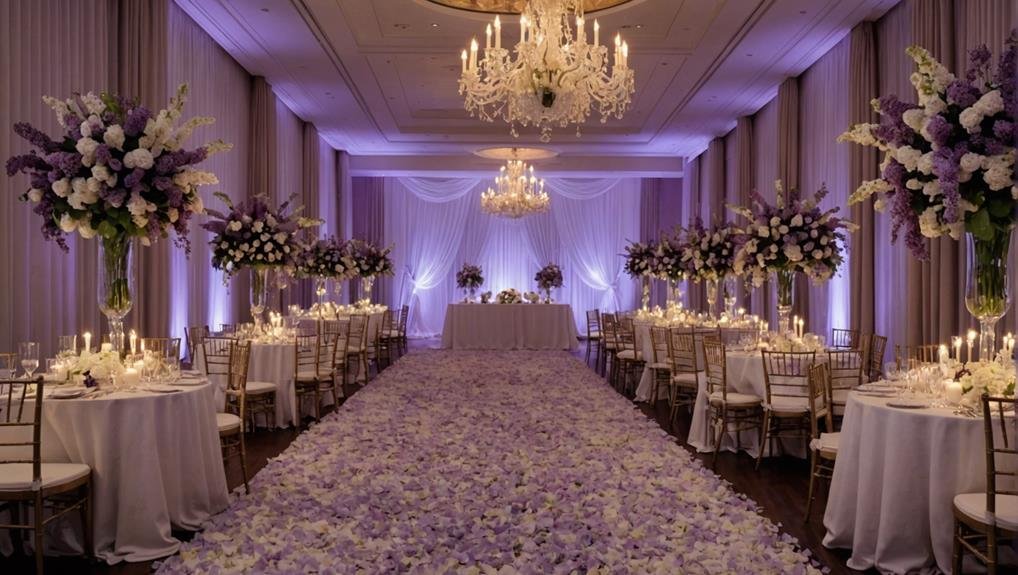
Renowned for their fragrant and romantic appeal, lilacs are a popular choice in wedding floral arrangements, often featured in bouquets, centerpieces, and ceremony decor. Their delicate blossoms and enchanting fragrance make them a favorite among brides seeking to add a touch of elegance and romance to their special day.
In weddings, lilacs can be used in several ways to enhance the overall aesthetic:
- Bouquets:
Lilacs are often combined with other flowers such as roses and peonies to create lush, aromatic bridal bouquets that exude a sense of new love and sophistication.
- Centerpieces:
When arranged in centerpieces, lilacs provide a soft and charming focal point, perfect for both intimate and grand wedding receptions. Their subtle hues can be paired with greenery and candles to create a cohesive and romantic table setting.
- Ceremony Decor:
Lilacs can also be incorporated into ceremony decor, such as archways, aisle markers, and altar arrangements. Their presence adds a touch of natural beauty and elegance to the wedding venue, enhancing the romantic ambiance of the ceremony.
Alternative Flower Types
While lilacs are a popular choice for wedding floral arrangements, exploring alternative flower types can provide equally enchanting options for creating a romantic and elegant atmosphere.
Hydrangeas, for instance, offer a similar aesthetic appeal and can be an excellent substitute for lilacs. Certain varieties of hydrangeas can be shaped or colored to closely mimic the appearance of lilacs, adding to their versatility in wedding arrangements.
Preserved flowers are another viable alternative, particularly beneficial for those sensitive to strong fragrances. These flowers, although they may lose their scent, maintain their beauty and longevity, making them a practical choice for long-lasting displays.
When considering alternatives to lilacs, it is essential to take into account the availability and cost of different blooms. Seasonal variations can affect both the accessibility and price of flowers, so planning ahead is important.
Experimenting with various flower combinations can help achieve the desired look and feel for your wedding, even if lilacs are not an option. By carefully selecting complementary blooms, such as hydrangeas, and incorporating preserved flowers, you can create stunning and memorable wedding arrangements that captivate guests and enhance the overall ambiance.
